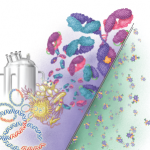In June 2013, the drug was approved by the European Medicines Agency for the same indications as Remicade, including rheumatoid arthritis (RA), Crohn’s disease and ulcerative colitis—based on data only on RA.
Then, in April of this year, Canadian regulators approved the drugs for RA, but not for Crohn’s or ulcerative colitis, because of differences in fucosylation and FC-gamma receptor binding and concerns about antibody-dependent cell-mediated cytotoxicity.
“I think the discrepancies between these two agencies highlight the point that we are very early in this game, and that we are dealing with very complex molecules that we have never tested before in such a setting,” Dr. Esplugues said. “And that therefore, they cannot be treated as generics. And the rules that we have set up and approved and evaluated in the last 25 years for generics, still cannot be used for these drugs.”
Hope at More Reasonable Prices
Dr. Esplugues repeatedly underlined the huge differences between generics and biosimilars, noting that the vast disparities in the molecular weights of aspirin and TNF blockers is like the difference between a scooter and a jumbo jet.
“We are testing the jumbo jet with regulations that were set up for the scooter,” he said.
He said clinicians can be assured that when new immunogenicity or new serious adverse events are seen, drugs will be stripped of their biosimilar privileges.
It will take time to fully and accurately define exactly what a biosimilar is—there are now three or four definitions put out by the European Medicines Agency alone, he said—but clinicians can nonetheless expect “high-quality regulation.”
“They will offer very good drugs, very successful drugs like TNF blockers at a more reasonable price,” he said, “therefore offering more hope to our patients.”
His position, he added, is “Let’s go” with the introduction of biosimilars, but with stringent requirements that can be strengthened or lessened over time, once there is more clinical evidence.
J.L. Severens, PhD, professor of evaluation in health care at the Institute of Health Policy and Management at Erasmus University Rotterdam, The Netherlands, said the likelihood that biosimilars will bring about significant change in health economics depends on more than just their ability to cut costs, but also on the quality of the new drugs themselves.
“There should be an explicit comparison of safety, effectiveness and costs to get the future picture of the economic consequences of a new technology in rheumatology,” Dr. Severens said. And models do exist to do that analysis.



